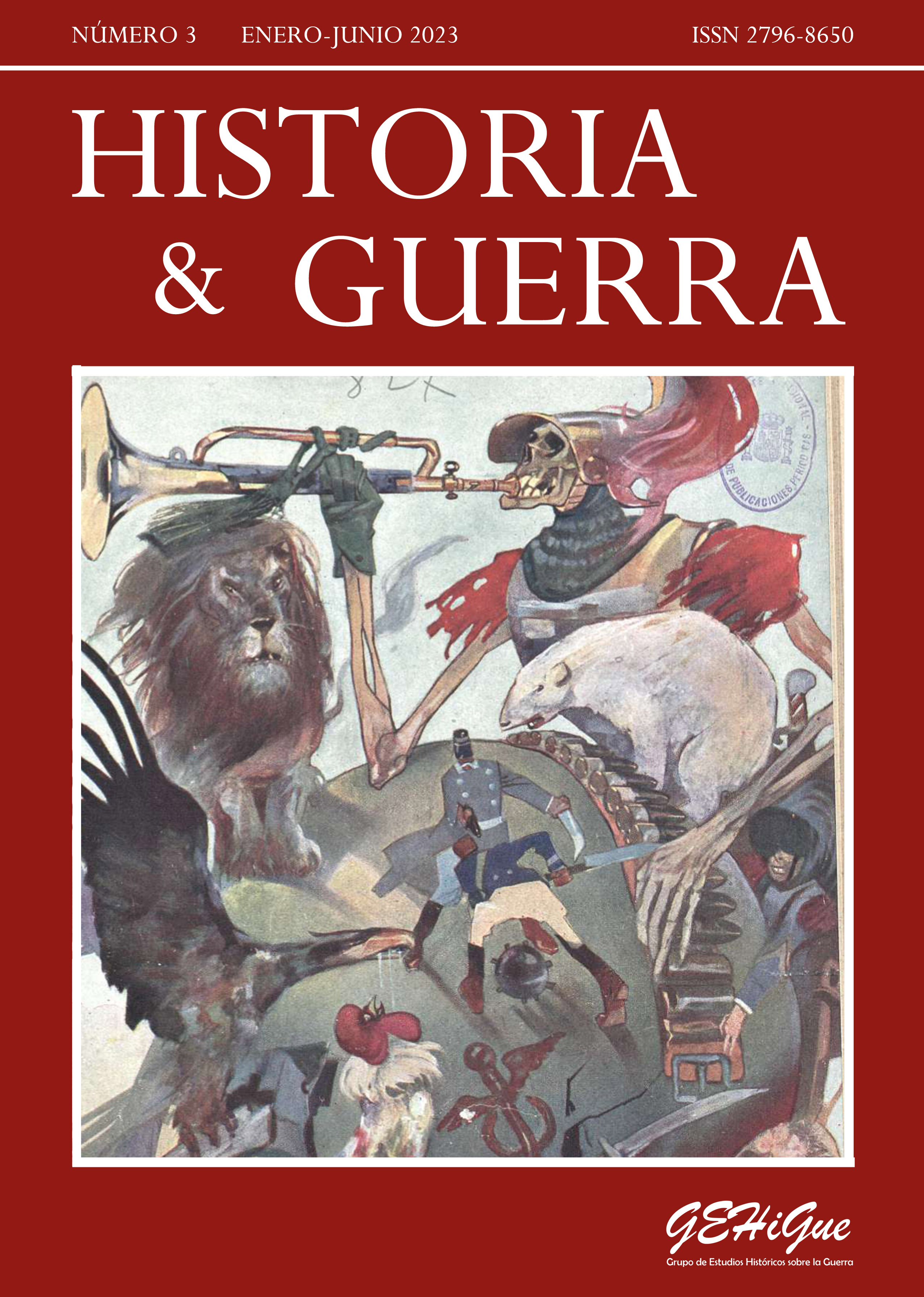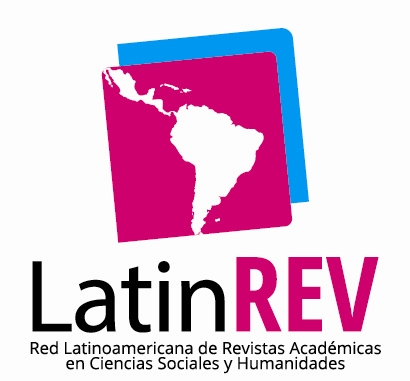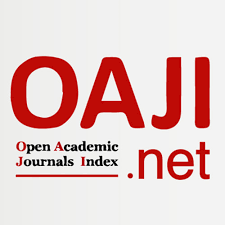A war for women. The female sections and writings of the weekly La Nota during the Great War (1915-1918)
Abstract
This paper analyzes the impact of the Great War on women in the weekly La Nota from its founding in August 1915 until the end of 1918. For this purpose, this article examines contributions published by women and under women’s pseudonyms, as well as articles that appeared unsigned and male interventions around the issue of women and the war. The essay postulates that the magazine exhibited the fear of the masculinization of women as a result of the exercise of new roles by women during the war and, simultaneously, encouraged the implementation of liberal reforms that would allow the expansion of women’s civil and political rights under the condition that they did not neglect the domestic sphere, the privileged scenario of women’s life.Downloads
References
Alegre Lorenz, D. (2018). Nuevos y viejos campos para el estudio de la guerra a lo largo del siglo XX: un motor de innovación historiográfica. Hispania Nova. Segunda Época, 164-196. https://doi.org/jpfm
Altamirano, C. y Sarlo, B. (1997). La Argentina del centenario: campo intelectual, vida literaria y temas ideológicos. En Ensayos argentinos: de Sarmiento a la vanguardia. Ariel.
Audoin-Rouzeau, S. y Becker, A. (2002). 14-18: Understanding the Great War. Profile Books.
Barrancos, D. (2016). Feminismos entre la paz y la guerra. La Aljaba, Segunda Época, (20), 19-33.
Becker, A. (2010). Faith, Ideologies, and the “Cultures of War”. En J. Horne (ed.), A Companion to World War I. Blackwell Publishing.
Bergel, M. (2015). El Oriente desplazado. Los intelectuales y los orígenes del tercermundismo en Argentina. Universidad Nacional de Quilmes.
Berkman, J. (1990). Feminism, War, and Peace Politics: The Case of World War I. En J. B. Elshtain y S. Tobias (ed.), Women, militarism, and war. Essays in history, politics, and social theory. Rowman & Littlefield Publishers.
Bicker, L. (1993). Public and Private Choices: Public and Private Voices. En D. Goldman (ed.), Women and World War 1. Macmillan.
Braybon, G. (2003). Winners or Losers. Women’s Symbolic Role in the War History. En Gail Braybon (ed.), Evidence, History and the Great War: Historians and the Impact of 1914–1918. Berghahn Books.
Braybon, G. y Summerfield, P. (2013). Out of the Cage. Women’s experiences in two World Wars. Routledge.
Cardinal, A., Goldman, D. y Hattaway, J. (1999). Women’s Writing on the First World War. Oxford University Press.
Compagnon, O. (2014). América Latina y la Gran Guerra. El adiós a Europa (Argentina y Brasil, 1914-1939). Crítica.
De Moreno, C. (2017). Liberalismo y nacionalismo en clave de eclecticismo editorial. La Primera Guerra Mundial en la revista La Nota. Épocas. Revista de Historia, (15), 65-88.
Delgado, V. (2005). Reconfiguraciones de debates y posiciones del campo literario en el semanario La Nota 1915-1920. Anclajes. Revista del Instituto de análisis semiótico del discurso, 8(8), 81-99.
Delgado, V. (2010a). Revista La Nota: antología 1915-1917. Universidad Nacional de La Plata.
Delgado, V. (2010b). Sobre los vínculos entre España y Argentina en La Nota (1915-1917). Olivar. Revista de literatura y cultura españolas, 11(14), 103-114.
Diz, T. (2005a). Periodismo y tecnologías de género en la revista La Nota 1915-18. Revista científica de la Universidad de Ciencias Empresariales y Sociales, 9(1), 89-108.
Diz, T. (2005b). Revista La nota: Hegemonías y resistencias en las representaciones de la subjetividad femenina. En A. Bottinelli, C. Gainza y J. P. Iglesias (coords.), Inclusión/Exclusión en América Latina. Hegemonías, resistencias, identidades. Centro de Estudios Culturales Latinoamericanos.
Dombrowski, N. A. (2005). Soldiers, Saints, or Sacrificial Lambs? Women’s Relationship to Combat and the Fortification of the Home Front in the Twentieth Century. En N. A. Dombrowski (ed.), Women and War in the Twentieth Century. Enlisted with or without consent. Routledge.
Fakin, M. (2019). Moda, instrucción y feminismo: revistas culturales destinadas al bello sexo. En M. Fakin, R. Musser y B. Steinke (eds.), Interconexiones, transferencias e información: Revistas culturales latinoamericanas, Ibero-Amerikanisches Institut.
Gasquet, A. (2015). El llamado de Oriente: historia cultural del orientalismo argentino 1900-1950. Eudeba.
Gómez Reus, T. (2012). Mujeres al frente. Testimonios de la Gran Guerra. Huerga & Fierro.
Grayzel, S. (1999). Women’s Identities at War. Gender, Motherhood, and Politics in Britain and France During the First World War. The University of North Carolina Press.
Grayzel, S. (2010). Women and Men. En J. Horne (ed.), A Companion to World War I. Blackwell Publishing.
Herzog, D. (2009). War and Sexuality in Europe’s Twentieth Century. En D. Herzog (ed.), Brutality and Desire. Macmillan.
Horne, J. (1997). Introduction: mobilizing for “total war”, 1914-1918. En J. Horne (ed.), State, Society and Mobilization in Europe during the First World War. Cambridge University Press.
Horne, J. (2019). End of a paradigm? The cultural history of the Great War. Past & Present, 242(1), 155-192.
Jeffress Little, C. (1985). Educación, filantropía y feminismo: partes integrantes de la femineidad argentina, 1860-1926. En A. Lavrin (comp.), Las mujeres latinoamericanas. Perspectivas históricas. Fondo de Cultura Económica.
Kelly, A. (2020). Commemorative Modernisms. Women Writers, Death and the First World War. Edinburgh University Press.
Klich, I. (1993). Argentine-Ottoman relations and their impact on immigrants from the Middle East: A history of unfulfilled expectations, 1910-1915. The Americas 50(2), 177-205.
Masiello, F. (1994). Introducción. F. Masiello (comp.), La mujer y el espacio público. El periodismo femenino en la Argentina del siglo XIX. Feminaria.
Masiello, F. (1997). Entre civilización y barbarie. Mujeres, nación y cultura literaria en la Argentina moderna. Beatriz Viterbo.
Memoria chilena. Biblioteca Nacional de Chile (2022). Teresa Wilms Montt (1893-1921). http://www.memoriachilena.gob.cl/602/w3-article-805.html#presentacion
Miseres, V. (2022a). Las guerras latinoamericanas del siglo XIX desde una perspectiva de género. Páginas. Revista digital de la Escuela de Historia. Universidad Nacional de Rosario, 14(36). https://doi.org/jpd3
Miseres, V. (2022b). Mujeres frente a la guerra: patriotismo y feminismo internacional de entresiglos. En Batticuore, G. y Vicens, M. (coords.), Historia feminista de la literatura argentina. Mujeres en revolución. Otros comienzos. Eduvim.
Mizraje, M. G. (1999). Argentinas de Rosas a Perón. Biblos.
Moraña, A. (2008). La propaganda, la moda y el consumo en la revista Caras y Caretas (Argentina, 1898-1910). Estudios, 16(32), 249-273.
Musser, R. (2019). Historia(s) en movimiento: la Primera Guerra Mundial como evento de medios populares en España y México. Boletín de Literatura Oral, (2), 217-228.
Ouditt, S. (2000). Women Writers of the First World War. An Annotated Bibliography. Routledge.
Ouditt, S. (2005). Fighting Forces, Writing Women. Identity and Ideology in the First World War. Routledge.
Purseigle, P. (2018). Las geografías de la guerra y de la beligerancia en la era de la Primera Guerra Mundial. En O. Compagnon, C. Foulard, et al. (coords.), La Gran Guerra en América Latina. Una historia conectada. Centro de Estudios Mexicanos y Centroamericanos - Institut des Hautes Études de L’Amérique Latine.
Purseigle, P. (2020). Controversy: War Culture. En U. Daniel et al (ed.), 1914-1918-online. International Encyclopedia of the First World War. Freie Universität. https://doi.org/jpfq
Rinke, S. (2014) Luxburg Affair. En U. Daniel et al (ed.), 1914-1918-online. International Encyclopedia of the First World War. Freie Universität. https://doi.org/jpfn
Rinke, S. (2019). América Latina y la primera Guerra Mundial. Una historia global. Fondo de Cultura Económica.
Sánchez, G. E. (2014a). La prensa de Buenos Aires ante “el suicidio de Europa”. El estallido de la Gran Guerra como una crisis civilizatoria y el resurgimiento del interrogante por la identidad nacional. Memoria y Sociedad, 18(37), 132-146.
Sánchez, G. E. (2014b). Pendientes de un hilo. Guerra comunicacional y manipulación informativa en la prensa porteña durante los inicios de la Gran Guerra. Política y Cultura, (42), 55-87.
Sánchez, G. E. (2018). Pasión de multitudes: la prensa y la opinión pública de Buenos Aires frente al estallido de la Gran Guerra. Anuario IEHS, 33(1), 177-204.
Sosa de Newton, L. (1986). Diccionario biográfico de mujeres argentinas. Plus Ultra.
Tato, M. I. (2017). La trinchera austral. La sociedad argentina ante la Primera Guerra Mundial. Prohistoria.
Thébaud, F. (2000). La Primera Guerra Mundial: ¿la era de la mujer o el triunfo de la diferencia sexual? En G. Duby y M. Perrot (dirs.), Historia de las mujeres en Occidente, Tomo 5, El siglo XX. Taurus.
Tornielli, P. (2015). Hombre de tres mundos. Para una biografía política e intelectual del emir Emín Arslán. Dirāsāt Hispānicas, (2), 157-181.
Tylee, C. (1990). The Great War and Women’s Consciousness. Images of Militarism and Womanhood in Women’s Writings, 1914-64. Macmillan.
Vicens, M. (2016). La escritora hispanoamericana en la cultura argentina de entresiglos [Tesis doctoral]. Universidad de Buenos Aires.
Copyright (c) 2022 Cinthia Meijide

This work is licensed under a Creative Commons Attribution-NonCommercial 4.0 International License.

Historia & Guerra uses an international license Attribution-NonCommercial 4.0 International (CC BY-NC 4.0).
You are free to:
- Share — copy and redistribute the material in any medium or format.
- Adapt — remix, transform, and build upon the material.
- The licensor cannot revoke these freedoms as long as you follow the license terms..
Under the following terms:
Attribution — You must give appropriate credit, provide a link to the license, and indicate if changes were made. You may do so in any reasonable manner, but not in any way that suggests the licensor endorses you or your use.
NonCommercial — You may not use the material for commercial purposes.
No additional restrictions — You may not apply legal terms or technological measures that legally restrict others from doing anything the license permits.
Notices:
You do not have to comply with the license for elements of the material in the public domain or where your use is permitted by an applicable exception or limitation.
No warranties are given. The license may not give you all of the permissions necessary for your intended use. For example, other rights such as publicity, privacy, or moral rights may limit how you use the material.
The author retains all rights to his work without restriction and grants Historia & Guerra the right to be the first publication of the work. Likewise, the author may establish additional agreements for the non-exclusive distribution of the version of the work published in the Journal (for example, placing it in an institutional repository or publishing it in a book), with the acknowledgment of having been first published in this journal. Use of the work for commercial purposes is not permitted.














.jpg)















